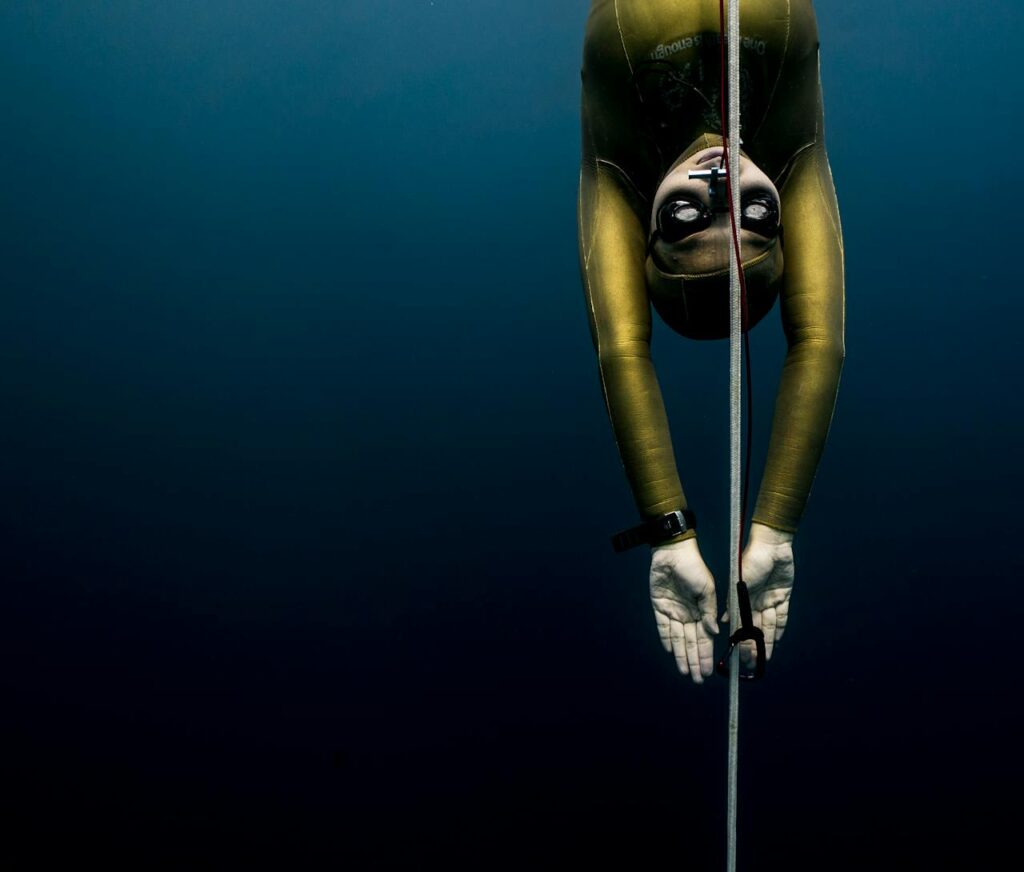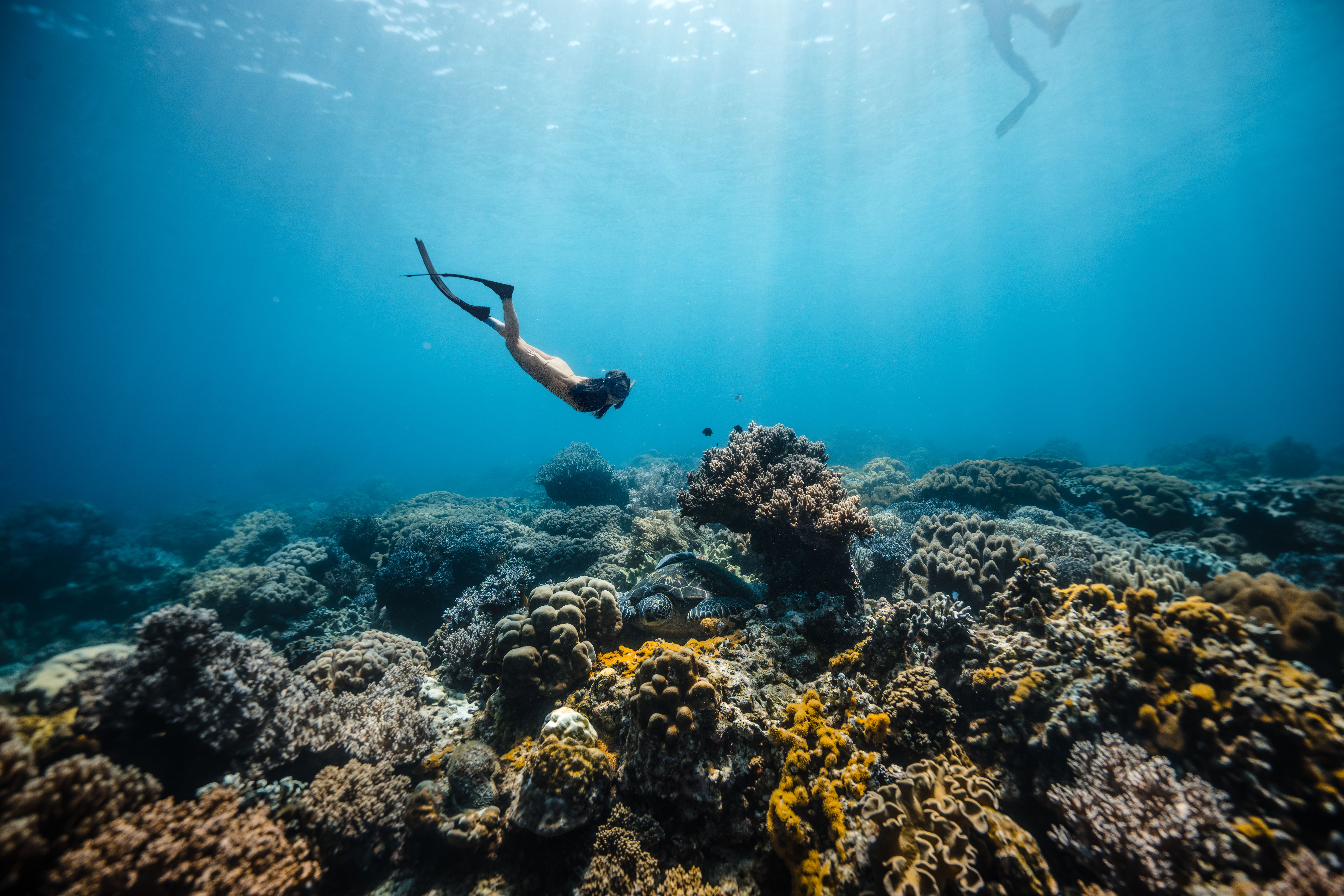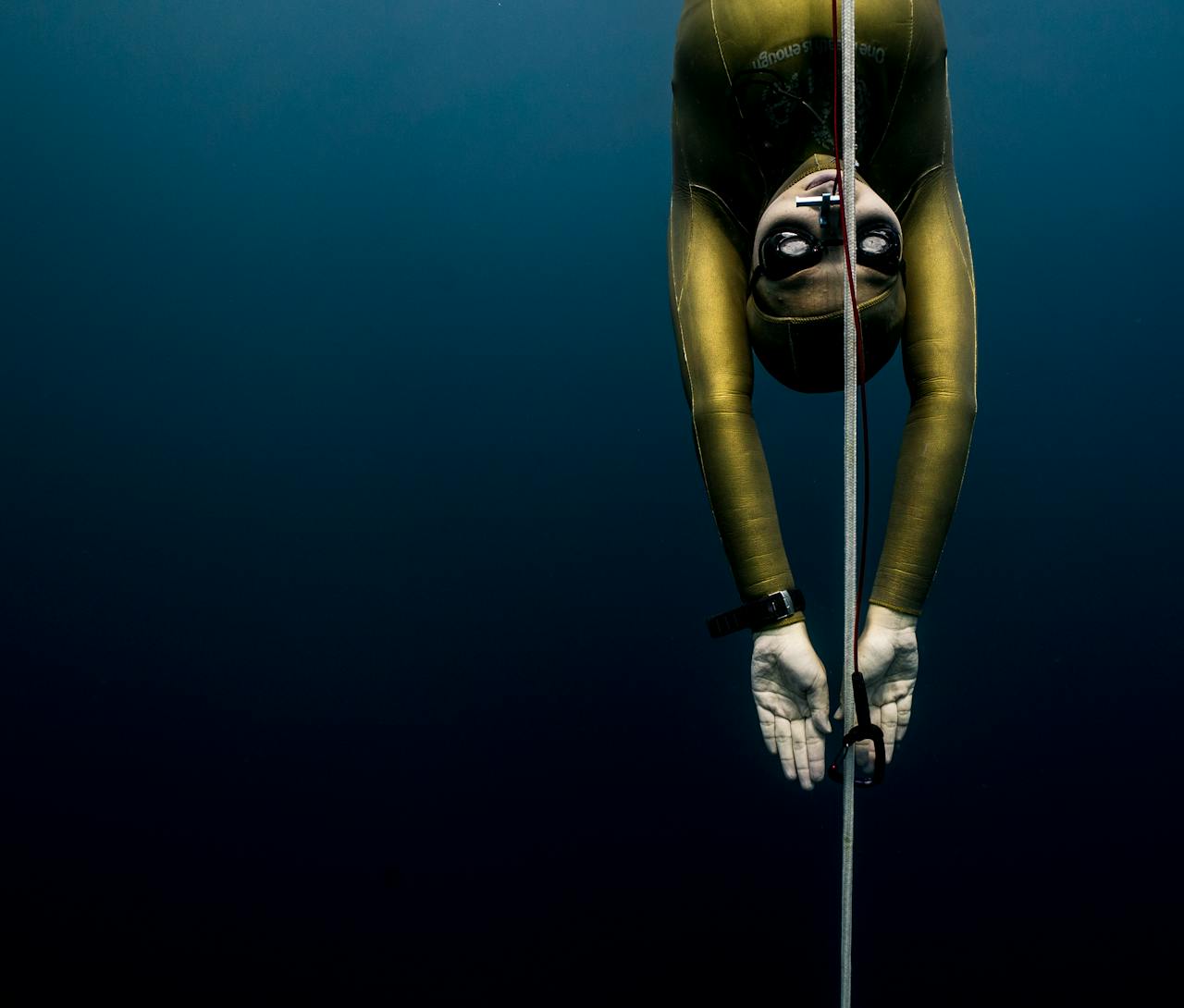The current world record for static apnea, or holding one’s breath while stationary, is 11 minutes and 35 seconds. This impressive feat was achieved by Aleix Segura Vendrell of Spain in 2016. In contrast, the average person can hold their breath for around 1-2 minutes. But it’s not just about static breath-holding; freedivers also perform dynamic apnea, where they swim distances underwater on a single breath, further showcasing their remarkable abilities.
Freediving is not just a test of lung capacity but also of willpower and the ability to control one’s instinct to breathe. Through training and conditioning, freedivers learn to suppress the body’s natural response to resurface for air, allowing them to stay submerged for extended periods. This control over one’s breathing reflex plays a crucial role in achieving longer breath-hold times.

Apnea Training
Freedivers undergo rigorous training to increase their lung capacity and tolerance to high levels of carbon dioxide in the blood. This is done through a combination of physical and mental exercises, such as hyperventilation, apnea walks, and CO2 tables. They also train by doing repetitive dives, which can help acclimate the body to the pressures of the water and increase the efficiency of oxygen usage.
Hyperventilation involves taking rapid deep breaths to increase the oxygen levels in the body and decrease the carbon dioxide levels. This allows the body to hold its breath for longer periods of time. However, it can also be dangerous if done incorrectly and should only be performed under the supervision of a trained professional. It’s a technique often misunderstood and can lead to serious consequences if not done correctly.
Apnea walks are another form of training where the diver walks on land while holding their breath. This exercise helps to strengthen the muscles used for breathing and can improve the diver’s overall breath-holding ability. It’s a simple yet effective method that can be practiced almost anywhere, making it a staple in many freedivers’ training regimens.
CO2 tables involve holding one’s breath for a set amount of time, followed by a short rest period, and then repeating the process. This helps the diver build tolerance to high levels of carbon dioxide in the blood, which is the main trigger for the body to take a breath. Over time, these exercises can significantly increase a diver’s breath-hold time and comfort while underwater.

Deep Diving
In addition to static apnea, freedivers also push their limits with deep diving, which involves diving to great depths without the use of oxygen tanks. The current world record for deep diving on a single breath is an incredible 702 feet, achieved by Herbert Nitsch of Austria in 2007. These depths pose unique challenges, including immense water pressure and the need for precise buoyancy control.
To prepare for deep diving, freedivers undergo specialized training to help their bodies adapt to the extreme conditions of the deep sea. This includes equalization exercises to prevent ear damage, as well as techniques to slow down their heart rate and conserve oxygen. Training for deep dives also involves learning to deal with the increasing pressure and the need for proper weighting to ensure an efficient ascent and descent.
Safety Precautions
Although freediving can be a thrilling and rewarding experience, it is not without its risks. It is essential for freedivers to undergo proper training and follow safety protocols to avoid accidents and injuries. Adhering to these protocols is critical for preventing potentially life-threatening situations.
One of the most significant dangers of freediving is shallow water blackout, which occurs when a diver loses consciousness due to low oxygen levels in the brain. This can happen suddenly and without warning, making it crucial for freedivers to always have a trained buddy with them while diving. Divers are also advised to avoid pushing their limits too far and to listen to their body’s signals.
Other potential risks include lung squeeze, which is the compression and potential damage of the lungs at extreme depths, and nitrogen narcosis, which can cause confusion and disorientation due to the increased levels of nitrogen in the body at deep depths. Proper training helps divers recognize the early signs of these conditions and take necessary action to mitigate risks.
The Role of Mental Strength
Freediving requires not only physical strength and training but also mental strength and control. As the body begins to experience the effects of low oxygen levels and high carbon dioxide levels, the mind can start to panic and trigger the urge to breathe. It is up to the diver to remain calm and focused to push through these urges and extend their breath-hold time.
Mental training is a crucial aspect of freediving and involves techniques such as visualization, meditation, and positive self-talk. These practices can help a freediver stay calm and focused, even in the most challenging and potentially dangerous situations. By visualizing a successful dive, a freediver can prime their mind for performance and build the confidence needed to face the depths.
In addition to these techniques, a strong mental game includes learning to cope with the discomfort that comes with breath-holding. Freedivers often speak of reaching a state of tranquility and acceptance when they are underwater, which allows them to overcome the body’s natural panic response. This mental resilience is just as important as physical conditioning when it comes to pushing the boundaries of human capabilities.
Conclusion
So, how long can a freediver hold their breath? As we’ve seen, with proper training and techniques, freedivers can hold their breath for an impressive amount of time. However, it is essential to prioritize safety and undergo proper training before attempting any freediving activities. With the right preparation and mindset, freediving can be an exhilarating and rewarding experience for those who are up for the challenge. Whether seeking to break records or simply explore the underwater world in silence, freedivers must always respect the ocean and their own limits.


